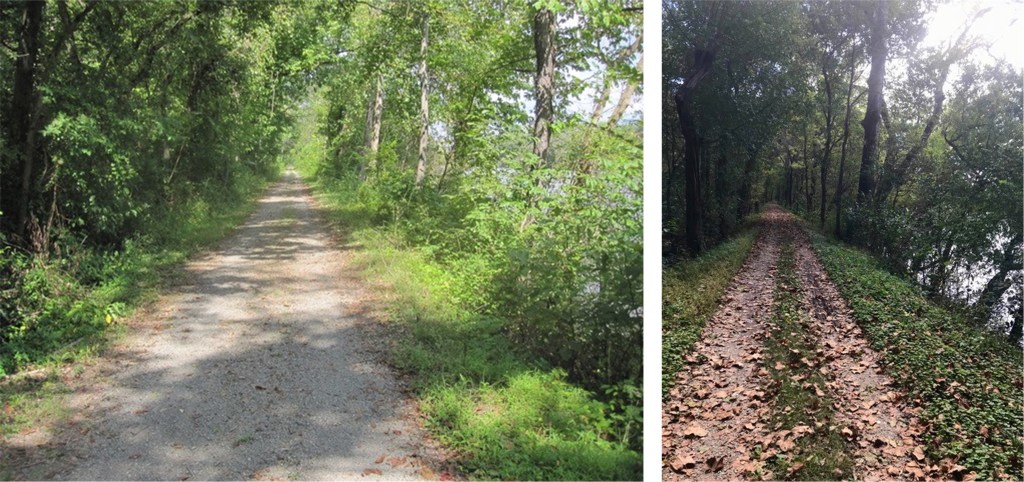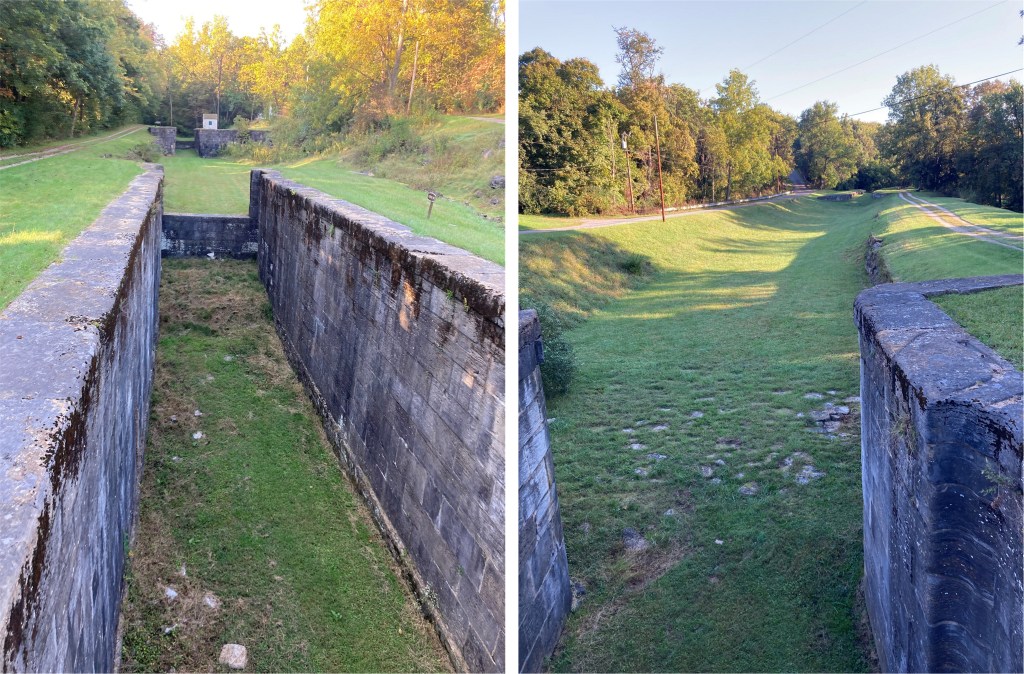Day 60, 2 October: Hancock to Brunswick, MD
Everything is “history in the making”, it’s just that some holds greater significance. Today we passed historical markers that have stood the test of time for significance, and for the Ride-2-Remember Team which is on the doorstep of individual and collective history.
Our day started at Happy Hills Campground where our shortcut to Hancock was closed due to open season for bow hunting. After 60 days on the road, no one wanted to take the chance of catching an errant arrow, so we backtracked our way back to the Western Maryland Rail Trail, which connected us to the C&O Canal Towpath. Though many cyclists with “skinny” tires might balk at the Towpath, our guys did fine. Having ridden this trail six times, I found the condition the best I’ve ever experienced… and it got better! The National Park Service has slowly been upgrading the trail. From about 15 miles north of Shepherdstown to Brunswick was just as good as the extraordinarily great GAP Trail we rode last week. An excellent trail and perfect weather… that alone is history in the making.

The uniqueness of the stretch we rode today is the quantity of history, its significance and the preservation for future generations. The towpath itself is historically significant, even if trains put canal barge transportation out of business almost before the canals were finished. The C&O Canal Towpath (a national park) displays lock houses, locks, tunnels and related infrastructure along with educational signage, as well as spaces for the public to enjoy the day. Some lock houses are available for short term rental, which having done so in the past truly brings the past to life.


Turning points in the Civil War also occurred along this stretch of trail. The Battle of Antietam may not have been the battle that started the war, but it was probably the first significant battle of the war. It was certainly the bloodiest. The Antietam battlefield is adjacent to the C&O Canal. Even before Antietam, John Brown made history in Harpers Ferry, just across the Potomac from the C&O Canal. Not too far from Antietam and Harpers Ferry on a remote section of the Towpath is a marker identifying “Falling Waters”, the location of a battle that didn’t happen but had it, the Civil War could have ended two years sooner, saving countless lives and carnage. It was here that General Lee was attempting to escape to the south after his defeat at Gettysburg. His entire army, however, was penned-in by a swollen Potomac River. Had General Meade pursued, Lee had nowhere to go.


The towns, buildings, homes and transportation infrastructure all have a story to tell, and most speak to times of historical significance for what was then a young country. The Ride-2-Remember also has a story to tell, though not on the scale of events just described and not a story that’s on the minds of the team members creating the history. It is, however, worth mentioning. No USNA class has ever cycled across the United States to a reunion.
This year two classes are just days away from completing this feat – Classes of 1973 and 1983. More importantly are the reasons each class is riding – ’83 to raise funds for veteran organizations while raising awareness of veteran suicides (22 per day), and ’73 is carrying the memories of our deceased classmates back to Annapolis for our fiftieth reunion. Both classes are setting the bar for future classes… a challenge to identify a purpose of significance for their class and then raise the bar. You won’t hear the riders from ’73 discuss (or even think about) the historical aspect of this ride, but readers ought to know. It’s a big deal… it’s history in the making.
Doug Leland
Leave a comment